From the rack by the entrance to his apartment, Aman Sadiyan plucks a blue leather jacket and slips it on like a second skin.
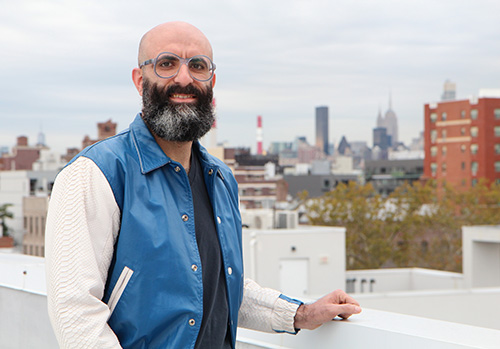
Aman was born in Iran.
Sporting snow-white python-scale sleeves and snaps, the vintage varsity jacket is part of Aman’s collection of wearable art.
In a flourish worthy of the runway, Aman, an intense man with searing brown eyes, a shaved head and a bushy black bird’s-nest beard that’s gracefully turning grey, flashes the vintage silk lining, revealing dancing Degas ballerinas.
Since before he can remember, Aman has been frequenting thrift shops and flea markets, filling up his closet with second-hand coats and jackets.
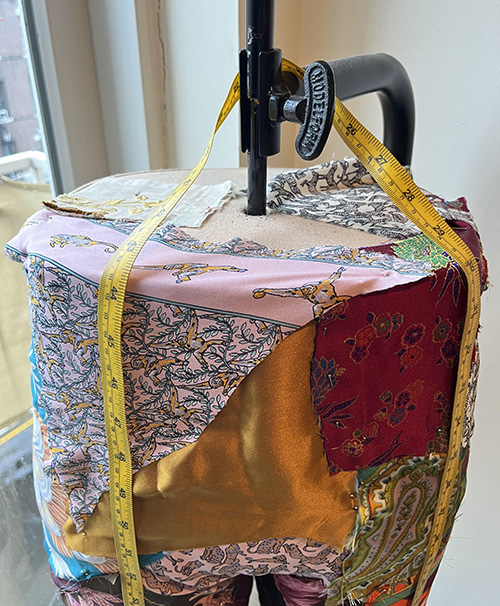
An idea in progress.
It’s only recently, though, that he has begun giving these garments a second life by transforming them into haute art.
When he finds an old jacket or coat that speaks to him, he pairs it with vintage furs and fabrics, creating one-of-a-kind fashions.
“I lay it on the floor,” he says. “And I wait for it to talk to me; it tells me what it wants.”
Creating art was the last thing Aman ever thought he would end up doing.

Aman started collecting vintage jackets as a teenager.
Aman, an Iranian Jew, was born in Tehran, but he didn’t stay there long enough to call it home.
When he was 3, he got a new tricycle; he was trying it out in the backyard of his grandmother’s grand house as his parents stood by arguing.
He was having too much fun to pay much attention to the fistfuls of words they were firecely flinging at each other.
But what he did hear – “we will leave tonight” – he’s never been able to forget.
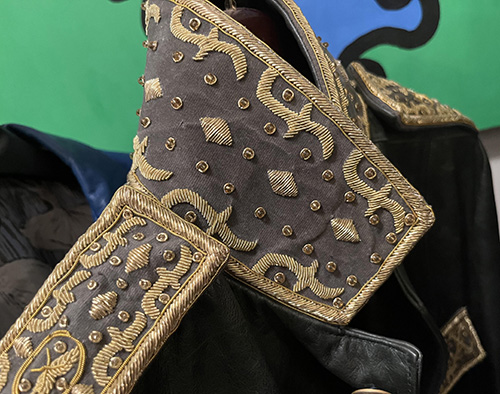
Aman uses factory scraps and vintage elements to bring new life to jackets.
It was 1988, and Ayatollah Khomeini had ordered the execution of political prisoners.
Aman had already seen his father, who had helped a number of people flee the country, shackled in prison, his back striped blood red with stinging lashes.
Late that night, the family boarded a bus for Turkey, passing through checkpoints where menacing guards with guns were turning people away.
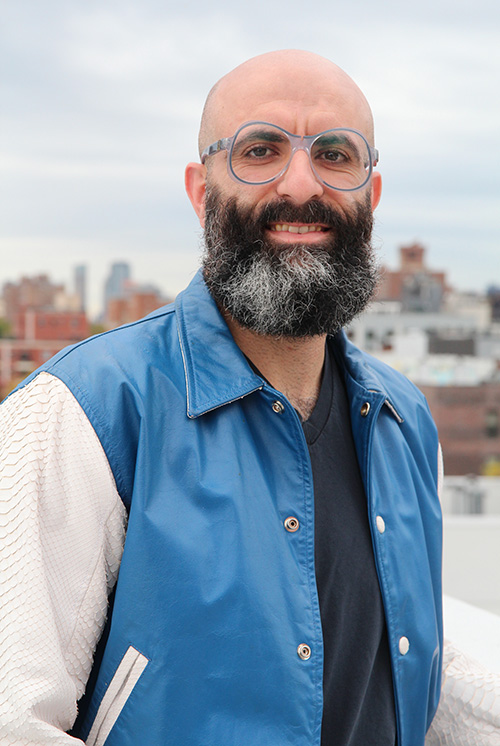
Aman grew up in LA.
“People were screaming and crying,” Aman says.
For three years, the family was unsettled, moving from Turkey to Vienna, Israel and finally Los Angeles.
“My father had family in Israel, and mother’s family was in Los Angeles,” Aman says. “She didn’t want to stay in Israel.”
The family, which owned one of the largest fabric stores in Tehran, left with nothing but hope.
Aman’s father opened another clothing store, and it became successful enough that the family eventually moved to Beverly Hills.
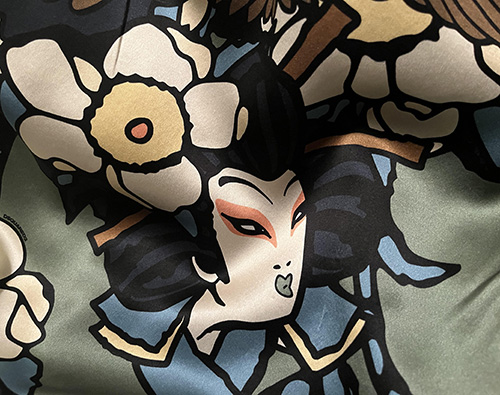
A detail of a vintage silk lining.
Aman started working, reluctantly, he adds, at the store when he was 6.
“I wasn’t allowed to stay home and do nothing,” he says.
By age 14, he was working in a restaurant as a busboy.
“I wanted a pair of Nike Air Max 95s,” he says. “They were $175; I didn’t have the guts to ask my mom and dad for the money.”
The sneakers aside, his goal was to open his own restaurant.
At 20, he moved to New York to attend Baruch College, where he majored in entrepreneurship.
“In LA, my friends were all Iranian Jews,” he says. “I wanted to break out of my bubble and find out who I was.”
The first thing he discovered about himself was that he was terrified to be away from home.
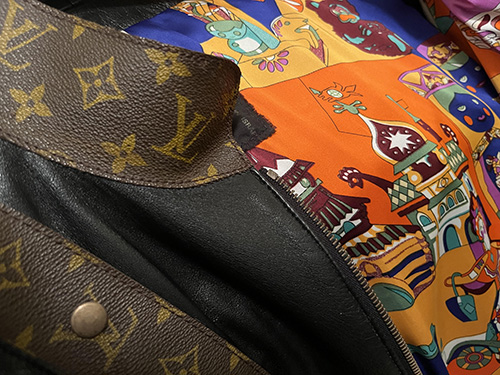
A jacket with a Louis Vuitton collar.
He rented a room in Forest Hills and worked in restaurants while he was in school, but after several years, he no longer wanted a career in the hospitality industry.
The work, he says, is so demanding that “you can’t be a family man.”
He tried out several careers, sometimes working two jobs simultaneously; he sold mortgages, insurance and real estate before hitting rock bottom.
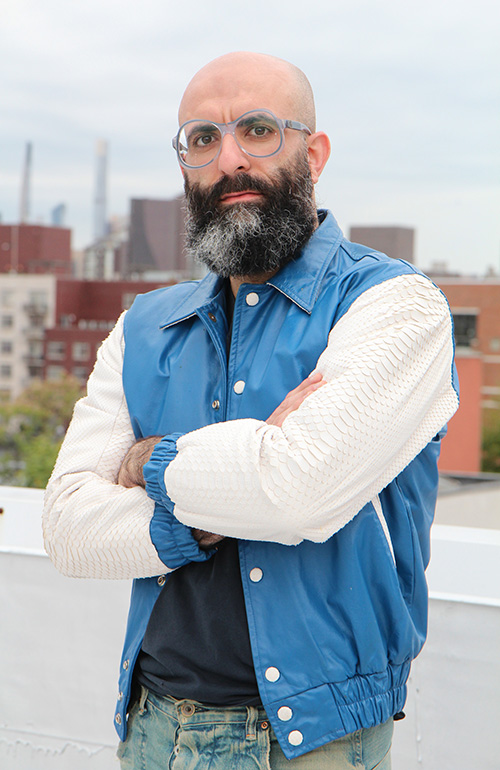
Aman tried on several careers.
“I was going to quit real estate and start over, but the last deal, which was for $37,000, fell through at the last minute, so I didn’t have any money,” he says. “The only thing that kept me sane was going to the gym. I started boxing – I hit the pads, and something ignited in me. I did that, and I saw a life coach.”
His real passion, he decided, lay in the fashion world, so he got a job as a garment measurer and fitter.
It was a care package from his mother that kicked his thrift-shopping into high gear again.

A curated collection of patterns.
“She sent my vintage burgundy leather jacket – it was the first thing I had bought as a teenager,” he says. “Something happened when I put it on the first time at the flea market. My shoulders went back, I stood taller, and I walked differently because I could feel the energy of the garment. It was filled with untold stories.”
Soon Aman was repairing and refurbishing vintage pieces, remaking them into art that carries his label, House of BRKT, whose name is derived from barakat, the Farsi word for blessings.
“Making these jackets makes me feel connected to God,” he says, adding that each comes with a title just like more conventional artworks. “Each one is a rebirth like what God does for me on a daily basis.”
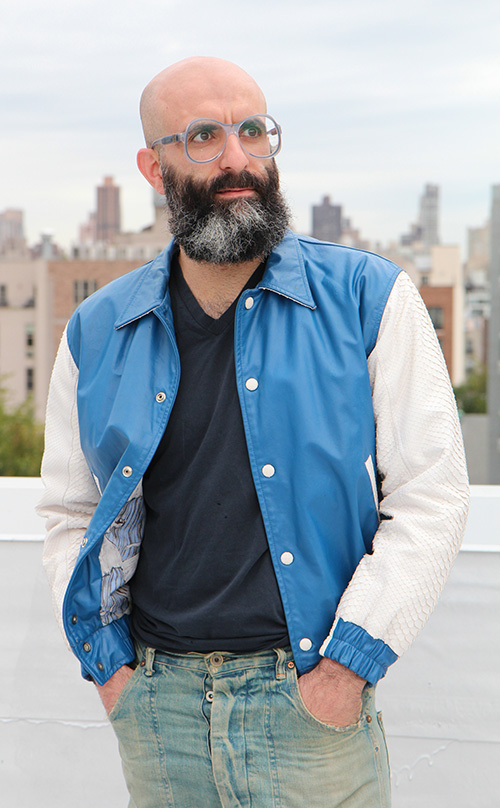
A varsity jacket with python sleeves and a lining with dancing ballerinas.
Once Aman works out the design, a tailor executes his ideas.
“I’ve been making them since 2018, but I couldn’t accept the fact that I was an artist until three years ago,” he says.
Aman hopes to show and sell the jackets in art galleries and envisions setting up a booth at Art Basel in Miami.
“I want to find my truth beyond everything else,” he says. “Why am I here? I want to find the answer. I’m getting closer and closer every day.”
Copyright 2023 by Nancy A. Ruhling
